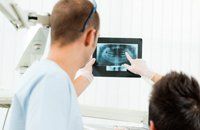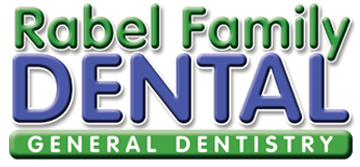Gone are the days of putty-filled dental trays and uncomfortable dental instruments — 2017 is all about patient comfort and efficiency. With more and more dentists using advanced technologies that solve age-old dental appointment complaints, your next checkup might be more pleasant than ever before. Here are four modern dental technologies you should ask about the next time you look for a new dentist.
1. Intraoral Cameras
If you are like most people, you probably sunk a little further into your dental chair the last time you went in for a routine cleaning. During cleanings, dentists and hygienists of yesteryear used tools called explorers, which are essentially curved metal objects with a fine point at the end.
These tools were used to detect cavities by whether or not the sharp end stuck into the soft spot of a tooth, which created an uncomfortable experience for patients. Fortunately, modern technology has an answer: the intraoral camera.
These powerful dental tools are fitted with a high-resolution camera on the end of a pen-like device, allowing dentists to sweep over the surface of your teeth without ever touching a surface. Capable of detecting dental decay that would normally be invisible to the naked eye; intraoral cameras help dentists to treat decay proactively without compromising your comfort.
Additionally, since the information from intraoral cameras can be fed onto a large monitor next to the patient's chair, it helps patients to understand the need for dental procedures and to enjoy the end results. Some intraoral cameras can even create 3D digital images of the teeth, eliminating putty molds and making it easy to track dental treatment progress.
2. Digital X-Rays
Forget about those uncomfortable dental films that took forever to process. Modern dental offices typically use digital X-ray equipment, which is faster, more accurate and safer for patients. In fact, digital X-rays can eliminate radiation exposure by more than 90 percent in some cases, helping patients to avoid unnecessary risks.
This benefit is especially helpful for patients who are at a higher risk for problems caused by radiation, including pregnant women and people who need a lot of imaging. Although standard protection equipment is still used to eliminate as much risk as possible, patients can rest easy in the dental chair knowing that they are being protected.
3. Cone Beam Imaging
Sometimes, a 2D image of your teeth doesn't give dentists enough information about the underlying cause of a problem, which is why scientists developed cone beam computed tomography for use in dental offices. These compact CT scanners are capable of taking axial, panoramic and cross sections of the teeth, gums and jaw tissues, streamlining diagnosis and treatment.
Commonly referred to as cone beam imaging, this special form of CT scanning helps dentists to diagnose everything from jaw tumors and impacted wisdom teeth to planning proper dental implant placement and reconstructive surgery. Since dentists can see the inner workings of your teeth from any angle, cone beam imaging also helps patients to avoid complications and recovery delays.
4. Smile Simulations
Wouldn't it be nice if you could see what a dentist had in mind for your smile long before you had any work done? Smile simulations allow dental professionals to do just that. Using 3D scanning from intraoral cameras and powerful dental software, dentists can show you exactly what they have in mind for your teeth before you spend the time and money to have the procedures done.
Smile simulation technology helps patients by showing them where they are in the treatment process. In addition to showing patients what their teeth will look like after orthodontic care, smile simulations can also be used to show what smiles will look like after receiving dental implants, tooth whitening, dental bonding and veneers.







